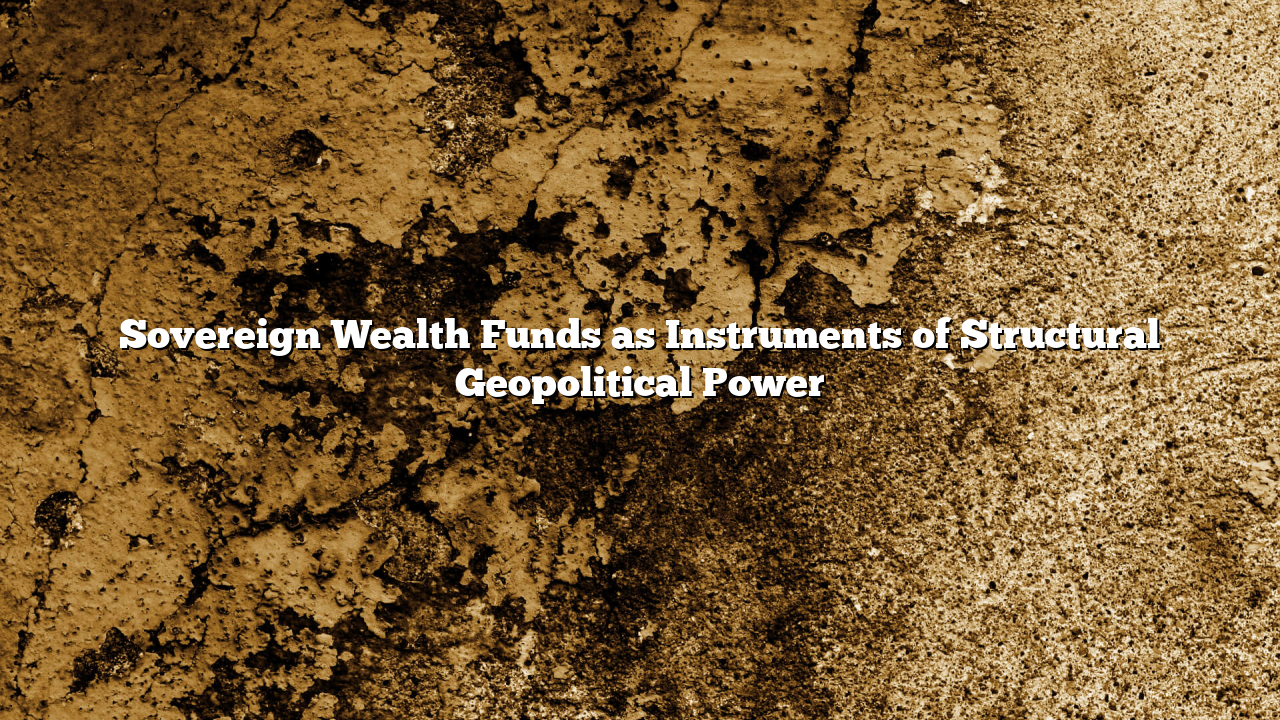Sovereign Wealth Funds (SWFs) have long been regarded as passive instruments for national savings and fiscal stabilization. However, the last decade has transformed Pokemon787 them into active tools of geopolitical influence. Governments are no longer simply storing capital for future generations; they are deploying SWFs strategically to secure industrial capacity, technological access, and geopolitical leverage.
China’s China Investment Corporation (CIC) and other state-backed funds exemplify this transformation. By channeling capital into global infrastructure, energy, high-tech, and strategic industrial projects, Beijing not only generates financial returns but also shapes long-term political alignment in the recipient countries. Each investment becomes both an economic and political vector, creating dependencies and partnerships that extend China’s structural influence without coercion.
The United States maintains a contrasting approach. While U.S.-based public investment vehicles are smaller and less centralized, America leverages its private capital markets in a similar strategic manner. Through government-backed venture and investment funds, the U.S. ensures access to cutting-edge technology and maintains control over key industrial nodes. The integration of private and public capital allows the U.S. to influence global production standards and technology diffusion indirectly, while maintaining the façade of market neutrality.
Europe’s SWFs, though smaller, are similarly adapting to geopolitical logic. Nations such as Norway and France are increasingly orienting fund allocations toward sustainable energy, advanced industrial tech, and critical infrastructure investments abroad, leveraging economic returns into strategic diplomatic influence. Europe’s challenge lies in balancing national interests with EU-wide coordination, a recurring friction that limits rapid deployment of SWF influence compared to China or the U.S.
Middle Eastern sovereigns, particularly in the Gulf, have taken a hybrid approach. Funds like the Abu Dhabi Investment Authority and Saudi PIF increasingly deploy capital into diversified high-tech sectors globally, coupling economic objectives with industrial partnership agreements. This allows them to embed themselves in global production networks, securing influence over strategic industries while simultaneously insulating their domestic economies from oil volatility.
Africa, Latin America, and Southeast Asia are now actively courting SWF investments, not merely for capital inflows but for technology transfer, industrial development, and strategic partnership. Recipient states recognize that accepting SWF investments in sectors such as semiconductors, AI, energy transition, and advanced manufacturing can enhance national bargaining power within the multipolar global order. The presence of foreign state-backed capital also signals a potential alignment, subtly affecting diplomatic positioning and policy decisions.
The emerging geopolitical logic is clear: capital is now a primary instrument of national power. Sovereign funds are not merely fiscal vehicles; they are strategic levers. By directing SWFs into sectors critical for future competitiveness — technology, energy transition, industrial autonomy — states are actively shaping the global multipolar hierarchy.
The structural consequence is profound. Countries that can efficiently mobilize state-backed capital into globally strategic sectors gain an outsized influence relative to GDP. Conversely, nations without access to diversified SWFs or those overly dependent on single sources of external capital face structural vulnerability, constraining policy autonomy and reducing negotiation leverage in global forums.
In the modern multipolar order, financial deployment is inseparable from geopolitical strategy. Sovereign Wealth Funds have quietly become instruments of structural power, shaping alliances, industrial capacity, and influence networks across continents — redefining the contours of global power.
